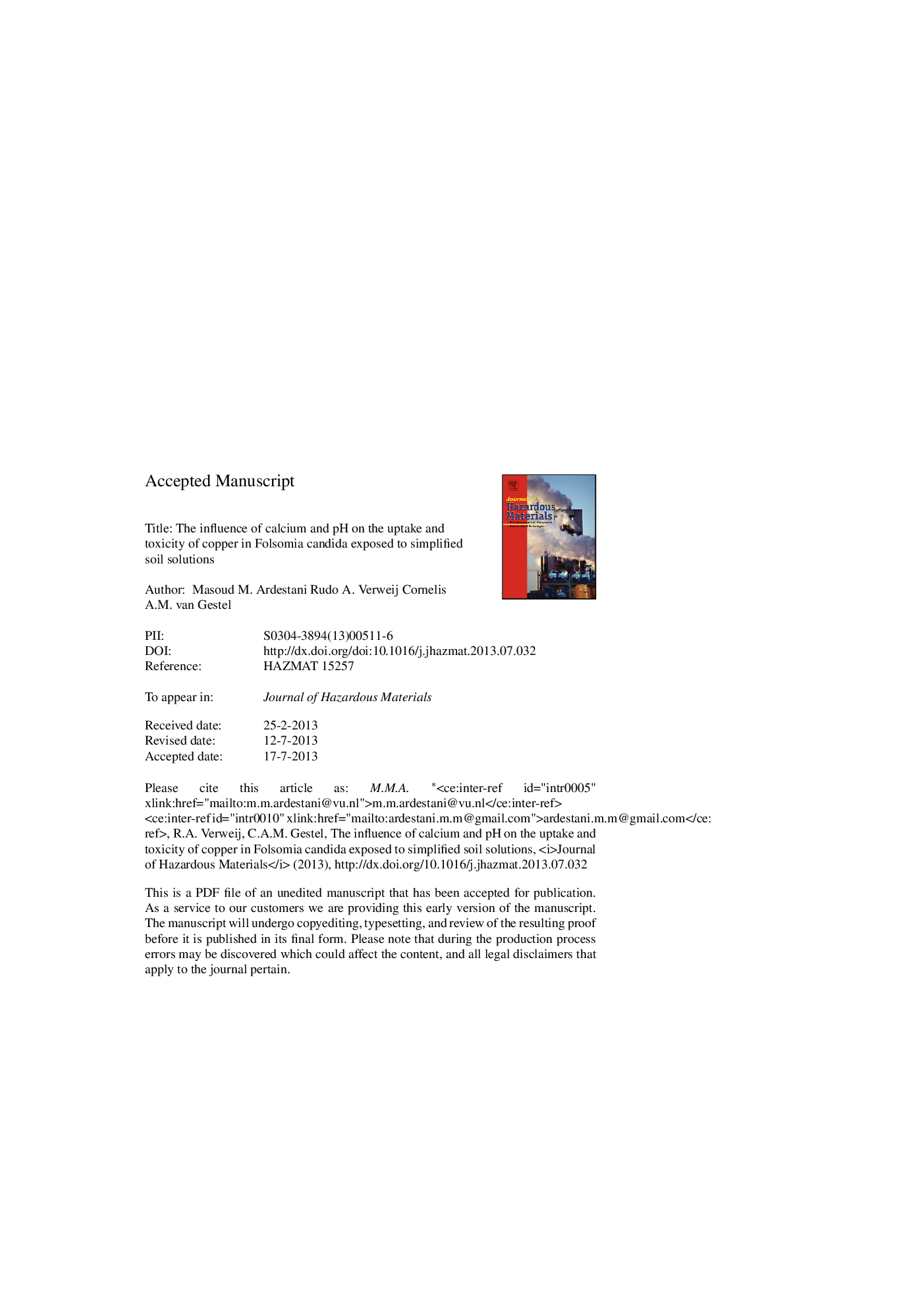| Article ID | Journal | Published Year | Pages | File Type |
|---|---|---|---|---|
| 6972024 | Journal of Hazardous Materials | 2013 | 42 Pages |
Abstract
The aim of the present study was to investigate the influence of Ca and pH on the uptake and effects of Cu in Folsomia candida (Collembola). Assuming that soil pore water is the main route of exposure, F. candida were exposed for seven days to Cu in simplified soil solutions at different Ca concentrations and different pH levels. A hormetic-type effect was seen for the effect of Cu on F. candida survival. Toxicity of Cu was slightly decreased and Cu uptake increased at the highest Ca concentrations. Cu toxicity and uptake were not significantly affected by pH. Conditional binding constants for Cu2+, Ca2+ and H+, calculated with a Langmuir isotherm, were used to relate Cu toxicity to the fraction of occupied binding sites (BL). The estimated 50% effect level (fCu-BL50) was 0.14 when all data were combined. To verify the Langmuir parameters, binding constants calculated based on internal Cu concentrations were used to estimate predicted effects and compared with the measured values. A good correlation between predicted and measured survival indicated that the principles of a biotic ligand model may be applicable to explain Cu toxicity to F. candida in simplified soil solutions.
Related Topics
Physical Sciences and Engineering
Chemical Engineering
Chemical Health and Safety
Authors
Masoud M. Ardestani, Rudo A. Verweij, Cornelis A.M. van Gestel,
